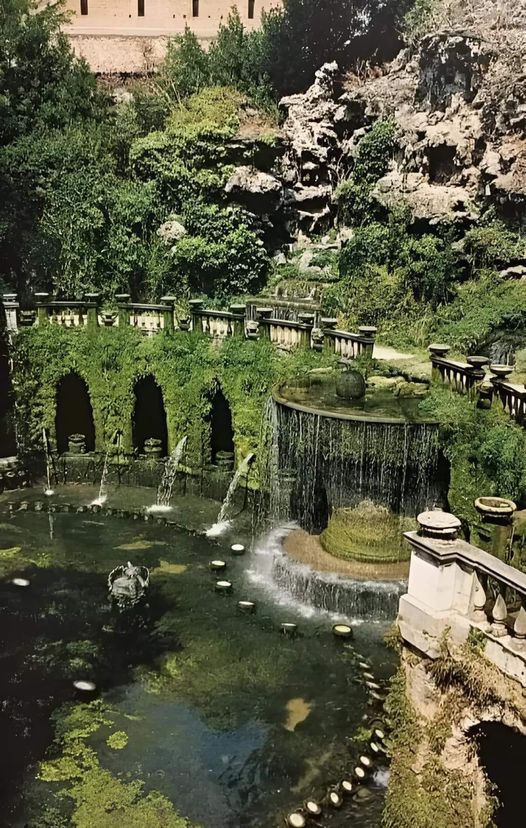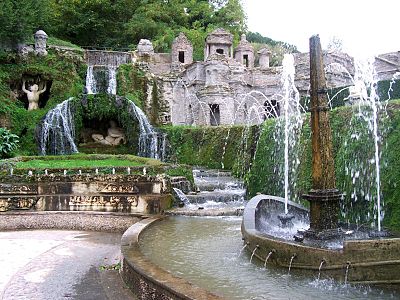Tivoli’s Villa d’Este: Renaissance Rock Gardens

Nestled in the picturesque town of Tivoli near Rome, Italy, the Rock Gardens of Villa d’Este stand as a testament to the ingenuity and artistic vision of the Renaissance era. Commissioned in the 16th century by Cardinal Ippolito II d’Este, the villa and its gardens exemplify the harmonious blend of architecture, water features, and meticulously landscaped terraces that define Italian Renaissance garden design.
The Rock Gardens, or “giardini delle rocce,” at Villa d’Este are renowned for their innovative use of natural elements to create a dramatic and immersive landscape. Perched on the steep slopes of Tivoli’s hills, these gardens showcase a series of terraces adorned with lush greenery, ancient sculptures, and cascading waterfalls that flow into a network of intricate fountains and pools.
At the heart of the Rock Gardens is the famous Oval Fountain, a centerpiece of hydraulic engineering marvel. Designed by the talented architect Pirro Ligorio, the fountain exemplifies the Renaissance fascination with water as a symbol of life and abundance. Its ingenious design allows water to cascade gracefully down multiple levels, creating a symphony of sight and sound that mesmerizes visitors to this day.

The gardens themselves are a botanical wonderland, featuring a diverse array of plants and trees carefully curated to complement the natural rocky terrain. Cypress trees, laurel hedges, and flowering shrubs punctuate the landscape, offering a sensory feast of colors and fragrances against the backdrop of ancient Roman ruins and sweeping vistas of the Tivoli countryside.
As one explores the Rock Gardens of Villa d’Este, each terrace reveals new surprises and artistic treasures. From the intricate mosaic pavements to the playful grottoes adorned with shells and pebbles, every corner reflects the cardinal’s desire to create a paradise on earth—a place where nature, architecture, and art converge in perfect harmony.

The influence of Villa d’Este’s Rock Gardens extends far beyond its Renaissance origins. Its innovative design and hydraulic engineering techniques have inspired generations of garden designers and landscape architects worldwide. The villa itself, with its opulent interiors and rich history, continues to attract scholars, artists, and tourists alike, offering a glimpse into the lavish lifestyle and cultural sophistication of Renaissance Italy.
Today, as a UNESCO World Heritage site, the Rock Gardens of Villa d’Este remain a testament to human creativity and ingenuity. They invite visitors to step back in time and experience the timeless beauty and serenity of one of Italy’s most enchanting Renaissance gardens—a place where art, nature, and history converge to create a lasting legacy of beauty and inspiration.










